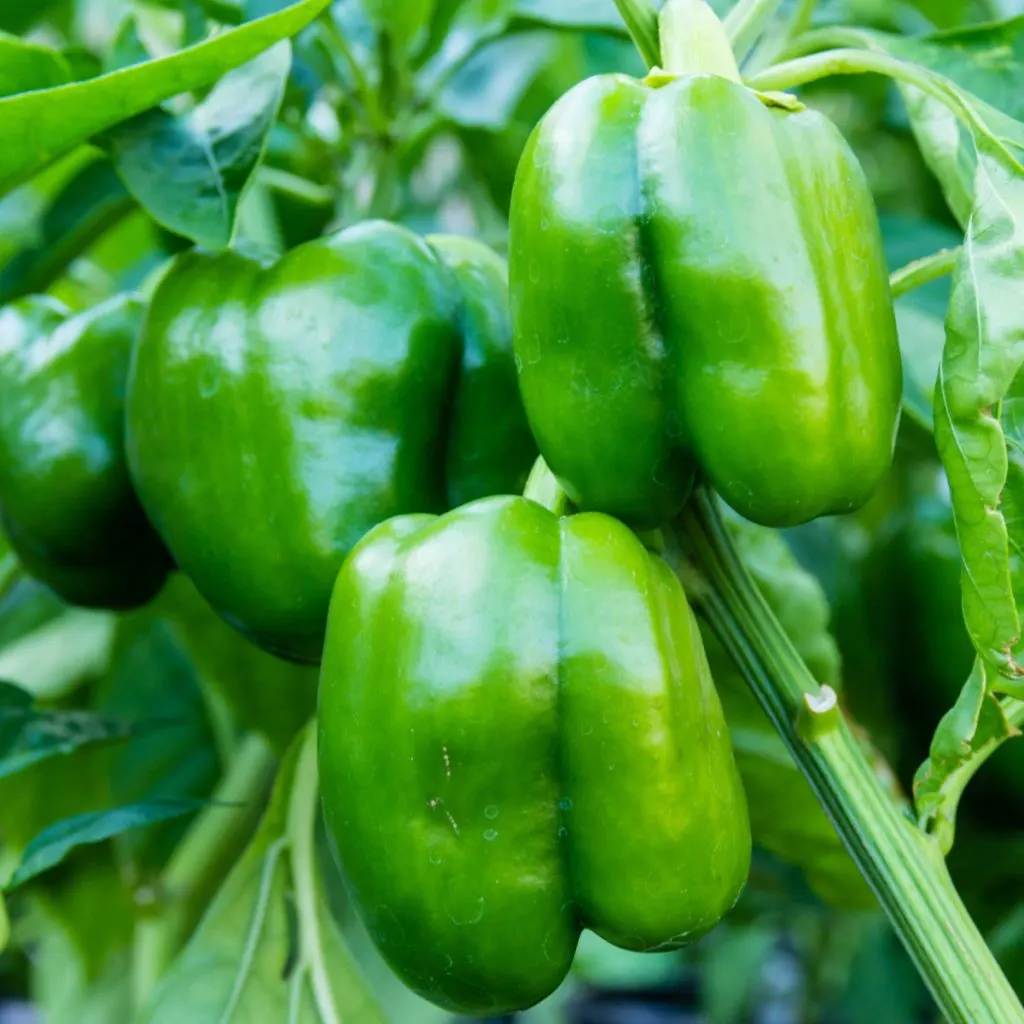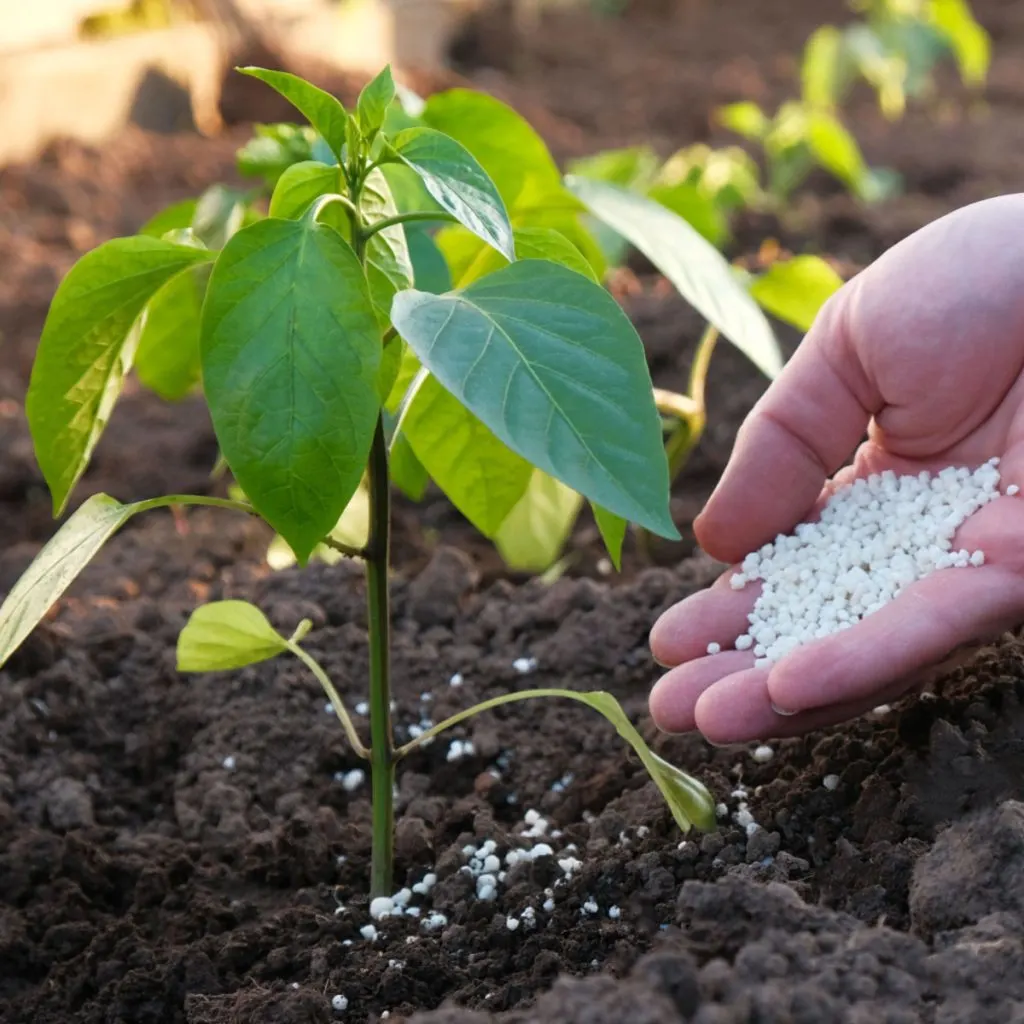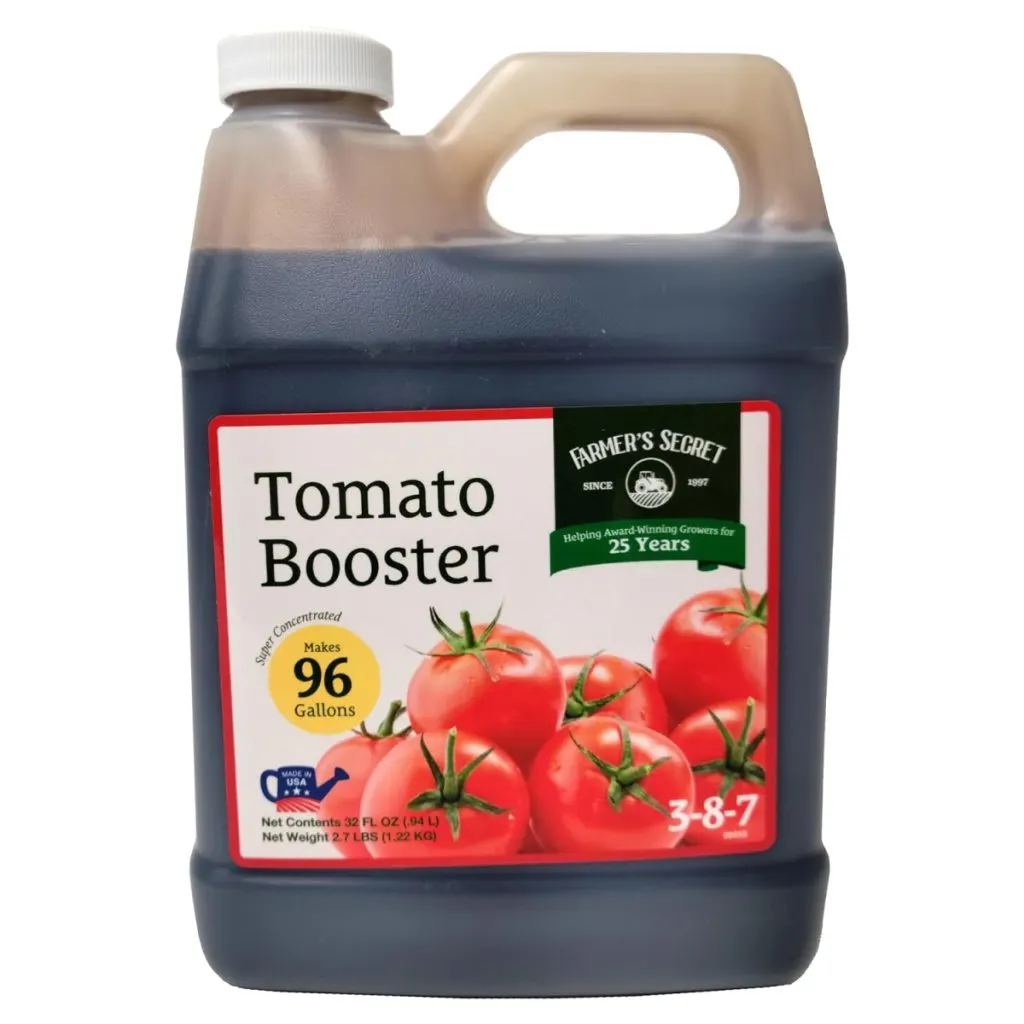One of the best ways to get your bell pepper plants to produce an incredible harvest of peppers is to fertilize them on a consistent basis throughout the growing season – but to really maximize your crop – knowing when, what and how to feed them is the real secret to success!
Peppers, just like tomatoes, are heavy feeders. Especially bell peppers due to their overall size they need to grow to in order to reach full maturity. Because of that, bell pepper plants can quickly deplete the nutrients from the soil. And when they do, the plants can start to suffer – not just in the amount of peppers they produce, but with their overall health.
The good news is it’s actually quite easy to keep your pepper plants powered up all throughout the summer – and in the process, ensure that you get to enjoy more peppers than ever!

The Best Way To Fertilize Bell Pepper Plants
The biggest mistake many gardeners make when fertilizing bell peppers is using the wrong type of fertilizer when the plants begin to produce.
When they are first growing as seedlings and young plants, bell pepper plants need a balanced diet of nitrogen, phosphorous and potassium (N-P-K). This is exactly why feeding them an all purpose 10-10-10 granular fertilizer for the first 10 weeks is ideal.
At this early point, they also require additional minerals such as calcium, manganese and iron (in lesser quantities) – but the big three (N-P-K) in equal amounts are certainly the most important for early development.
Nitrogen is key for early growth for nearly all vegetable plants. It helps to produce strong stems, branches and a full canopy of leaves. Early on, phosphorous and potassium are vital for promoting strong cell development and allowing the plant to absorb and distribute nutrients and water.
But once a bell pepper plant begins to mature and is ready to produce, its needs change. Which is exactly why what you feed your plants needs to change to an energy source that produces more peppers – and not just overall growth.

How To Fertilize Bell Pepper Plants To Get More Peppers
The key to fertilizing bell peppers for more production is to switch to a fertilizer heavy in phosphorous and potassium. These two vital nutrients are exactly what the plant needs to produce blooms and develop fruit as they mature.
It’s not that nitrogen is not still important. It’s still needed to maintain growth, but on a much smaller scale. Unfortunately, if you feed your pepper plants excess nitrogen in the summer, the plant will use the resources to only grow – all at the expense of producing blooms and fruit.
Instead, you need to look for a fertilizer that has a double to triple amount of phosphorous and potassium versus nitrogen. Fertilizers designed for producing blooms and fruit (tomatoes, peppers, annual flowers) are excellent for this. Affiliate Product Link: Pepper & Tomato Booster Liquid Fertilizer 3-8-7 NPK (32oz) – Super Concentrated
But even more, it’s important to make sure it is a liquid fertilizer. Why? Because liquid fertilizers work fast and in multiple ways. Liquid fertilizer absorbs both through the soil and roots and through the leaves of plants. For bell pepper plants, this means the energy gets where it’s needed fast!

Consistency Is The Key – The Best Way To Fertilize Bell Pepper Plants
Now that you know what to use on your bell pepper plants, the final secret to success is making sure to fertilize your pepper plants on a consistent basis with the right amount of power.
To help your pepper plants produce more blooms and fruit, it’s more important to give them lighter but more frequent fertilizer doses. This keeps a steady supply of energy going to the plant without overpowering it.
The best way to do this is to dilute your liquid fertilizer to half strength when mixing with water. Then instead of applying every two weeks, apply it every seven to ten days. This keeps the plant from overgrowing with a big dose of energy all at once.
When applying liquid fertilizer, early morning or late evening is best. This is when plants are not stressed from the heat of the day and can more quickly absorb the nutrients. It also prevents the foliage from sun scald with moisture hitting the leaves in direct, hot sunlight.

A Few Final Tips To Grow More Peppers – The Best Way To Fertilize Bell Pepper Plants
In addition to regular fertilizing, there are a couple of other key factors for getting your pepper plants to produce more peppers. The first is to make sure they are getting adequate water throughout the summer months.
Bell pepper plants should be getting 1 to 1.5 inches of water per week. That water is vital for allowing the peppers to fill out and absorb and distribute nutrients for blooms and fruit. If you are not getting adequate rainfall, watering is a must.
Equally important is to not let your plants suffer from fruit overload. When pepper plants become loaded with too many peppers at once, the plant will slow down or even stop new bloom production to concentrate resources on ripening.
The good news is by picking plants regularly, you can stop this from ever becoming an issue. See our article: How To Know When To Pick Peppers
Last but not least, make sure your plants have a thick layer of mulch around their base. Mulch helps to stop competing weeds from growing, keeps moisture in the soil and keeps the soil from overheating. A good 4 to 6 inch layer of straw, grass clippings or shredded leaves will do the trick.
Here’s to fertilizing your bell pepper plants to perfection this year. And even more – to harvesting more beautiful, big bell peppers than ever! For more tips on growing great peppers, be sure to see: Why You Need To Prune Pepper Plants – And How To Do It!
This Is My Garden
Follow Our Facebook Page For Great Gardening Tips And Advice! This Is My Garden Facebook Page
This Is My Garden is a garden website created by gardeners, for gardeners. Jim and Mary Competti have been writing gardening, DIY and recipe articles and books and speaking for over 15 years from their 46 acre Ohio farm. They publish three articles every week, 52 weeks a year. Sign up today to follow via email, or follow along!
